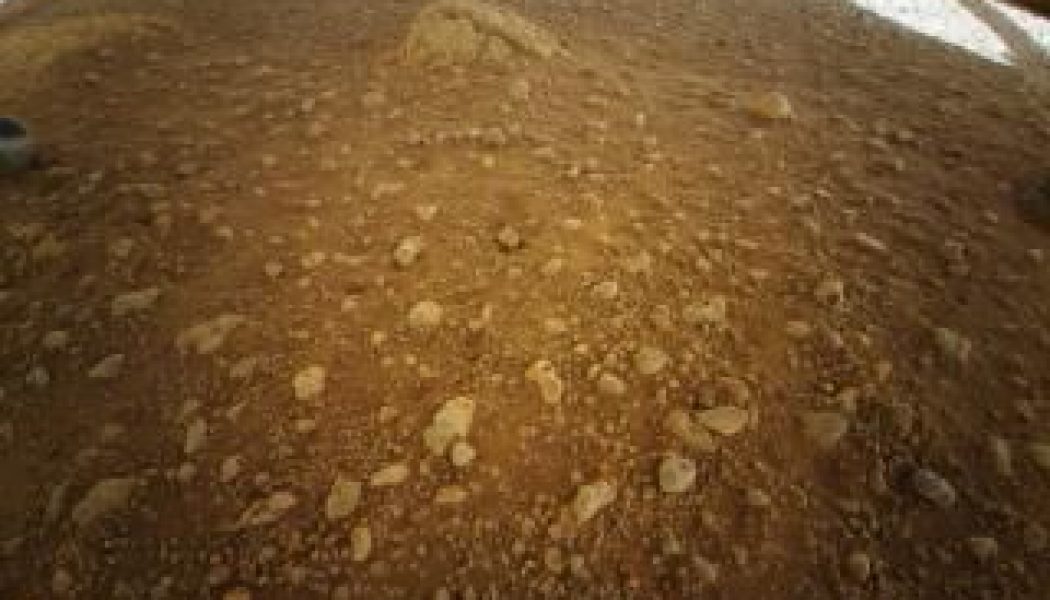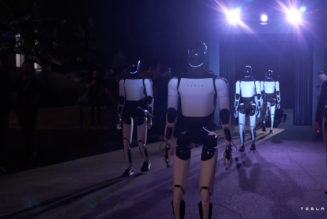NASA’s mini Ingenuity helicopter survived its first night all alone on the surface of Mars after getting dropped off by Perseverance on Saturday. Weathering frigid Martian temperatures, the newly deployed rotorcraft passed an important test of independence, giving engineers confidence to proceed with a series of warming-up exercises in preparation for its first flight this weekend.
“That was one of the huge, huge achievements that we’ve been looking forward to, and now we can move on to the rest of the mission,” Teddy Tzanetos, Ingenuity deputy operations lead, said on Monday on a NASA live stream. “And now we’re on our own. We’re a separate spacecraft on Mars on our own energy.”
The four-pound, solar-powered craft arrived on Mars attached to the belly of NASA’s Perseverance rover on February 18th. The rover dropped Ingenuity’s protective covering last month to begin a meticulous, week-long deployment process that concluded last weekend, with Ingenuity’s four landing legs firmly planted on the Martian surface for the first time. Soon after, Ingenuity’s 13-megapixel camera snapped its first image of the ground.
:no_upscale()/cdn.vox-cdn.com/uploads/chorus_asset/file/22424771/1e_PIA24437.jpeg)
Perseverance backed away, kicking off the helicopter’s 31-day clock to carry out five flight tests and become the first craft to achieve powered flight on another world. Its first flight is currently slated for Sunday, April 11th, with confirmation on whether the attempt was successful arriving through the Mars-to-Earth data pipeline the next day.
Engineers at NASA’s Jet Propulsion Laboratory confirmed Ingenuity survived Mars’ freezing-cold nighttime temperatures of around -130 degrees Fahrenheit on Monday morning, after the copter sent signals back to Mars Base Station, a communications hub aboard Perseverance.
For its first flight test this weekend, Ingenuity will rise nearly 10 feet from the surface and hover in place for roughly 30 seconds. It’ll pivot while hovering to demonstrate fluid movement, then begin a gradual descent for a landing. Engineers expect to receive images of Ingenuity’s hover on the morning of April 12th, along with troves of data on the flight.
Perseverance beamed back images of Ingenuity shortly after dropping it off on its “helipad,” a small space on one side of its running track-shaped flight zone. Subsequent tests within Ingenuity’s 30-day test window include flying as high as 16 feet and zipping forward within the flight zone. The copter won’t carry out any science missions during its stay on Mars; engineers have emphasized this is just a flight demonstration.
Ingenuity’s twin-rotor system, spanning four feet, will spin in opposite rotations as quickly as 2,400 rpm to achieve lift in Mars’ ultrathin atmosphere.
Despite the copter’s tiny and lightweight design, it needs to be fully power-independent now that it has detached from Perseverance’s power supply. To do this, the craft has a solar panel above its propellers that powers six lithium-ion batteries in its tissue box-sized body, which also houses a computer roughly 100 times more powerful than Perseverance’s, and small heaters to keep itself warm through frigid Martian nights.










